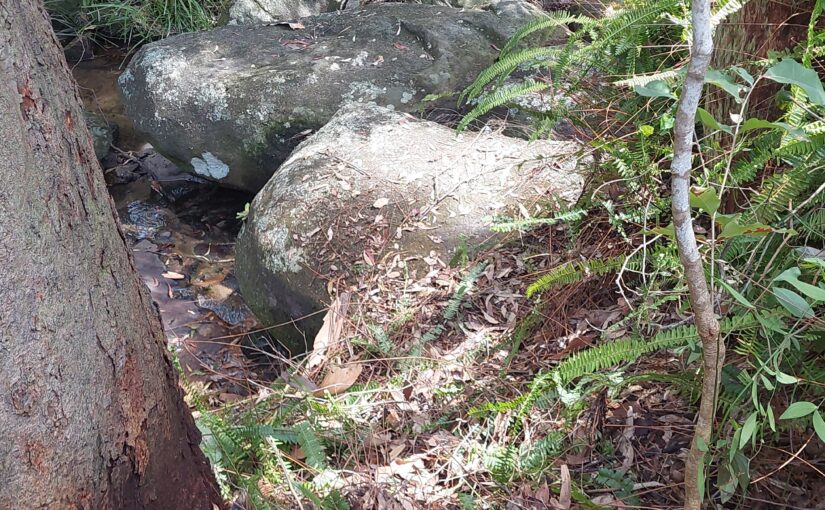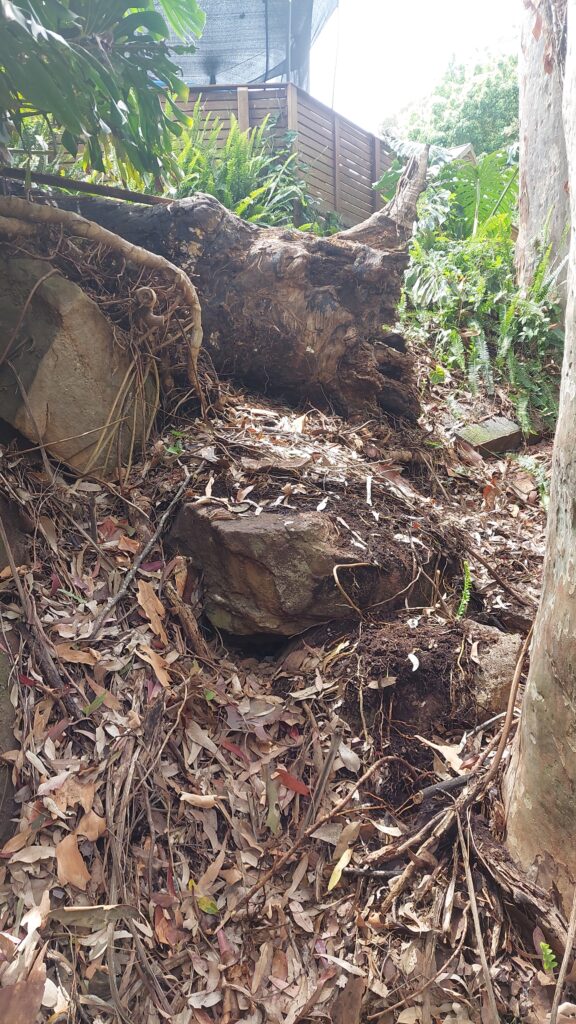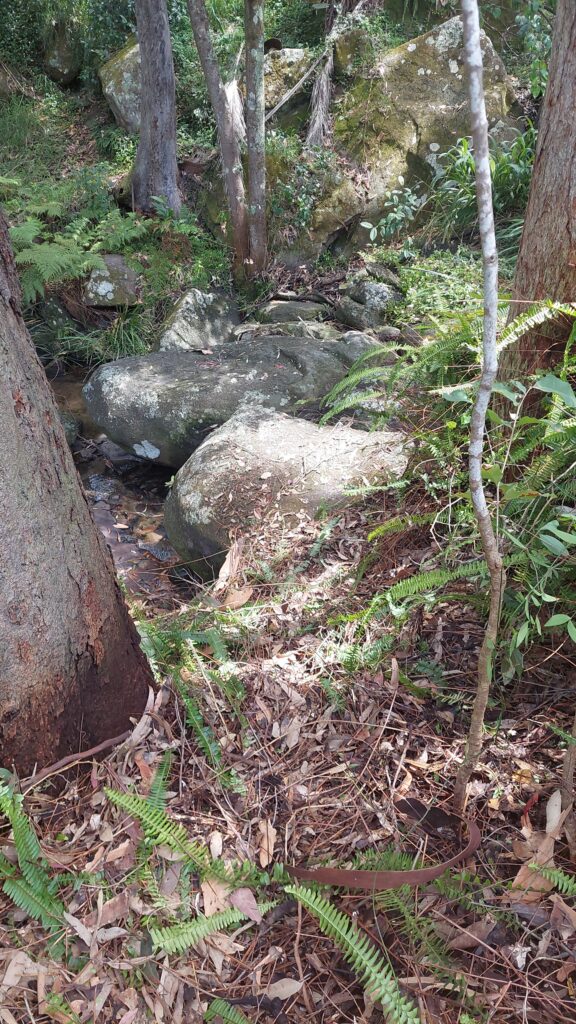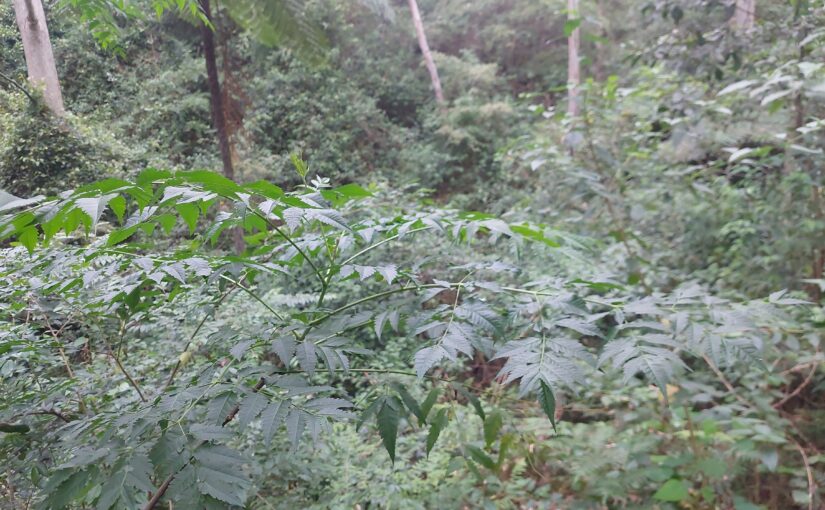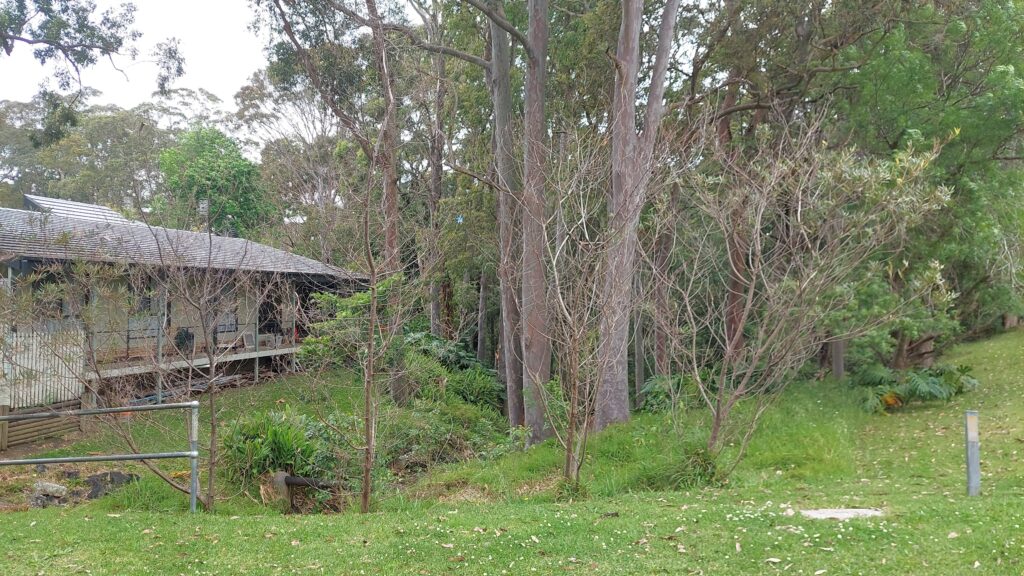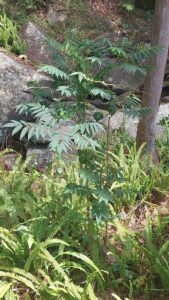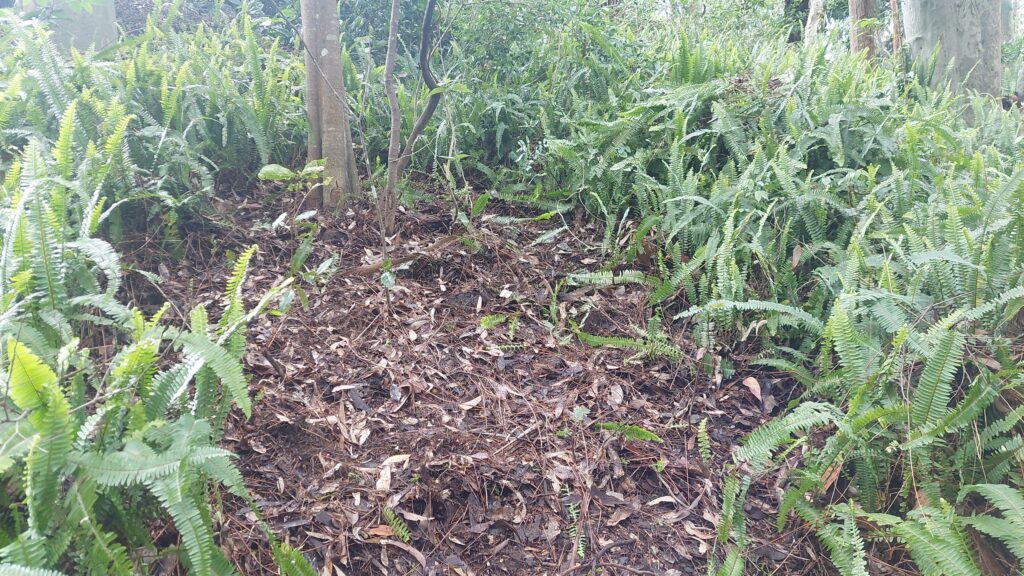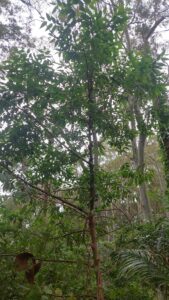Another productive working bee today. It’s been great to do bush regeneration lately. The ground gets regular soakings which makes removing plants like fishbone fern far easier and more effective as more of the roots are pulled up with the plant.
My focus is still on getting the tracks in better shape.
This guy loves to wait until I am right beside it before it takes off in a rush. Gets me almost every time! It was worst today as he was on a rock at eye level as I was moving past.
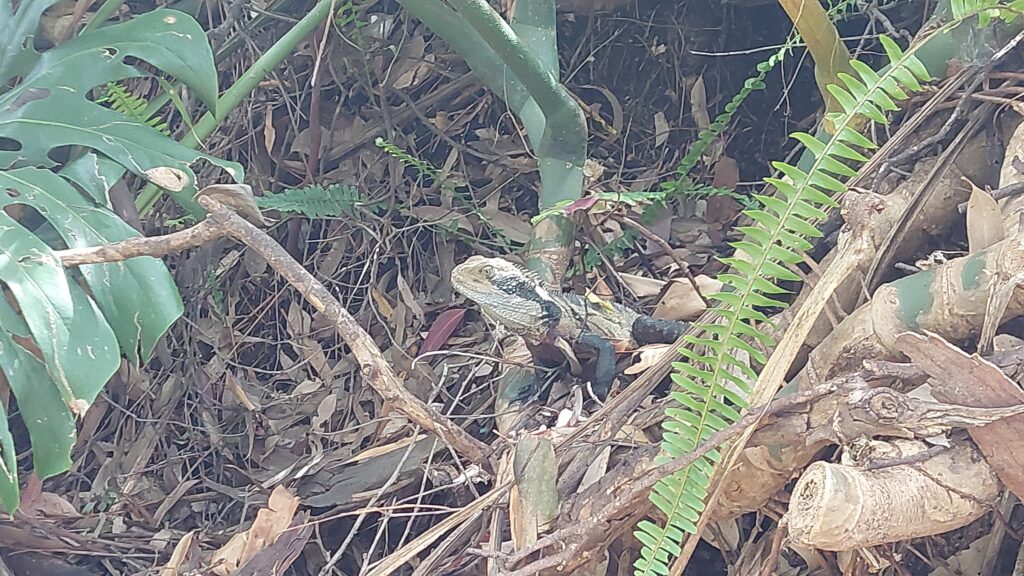
My daughter and I wanted to explore the ground under a nearby currawong nest as I had seen a Channel billed cuckoo near the nest and I was wondering if the currawong’s egg had been evicted. Unfortunately, the area under the nest was just too messy and boggy to search. On the way there and back though, I noticed more Gahnia and young pittosporums struggling against the fishbone fern. Hence, that turned into the next spot to work on. The image below shows my efforts.
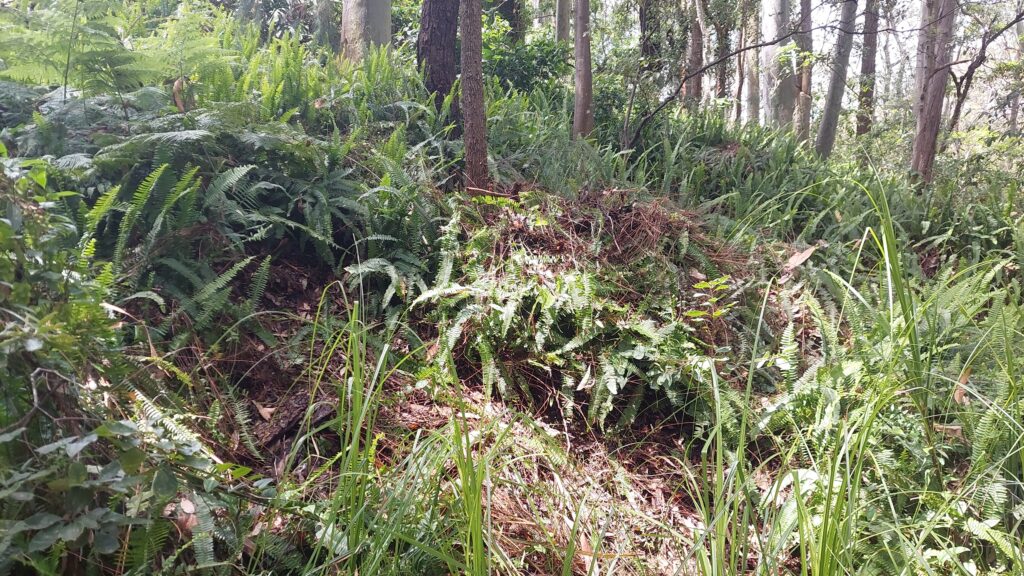
This ‘track’ down the hill leads to the Gahnia. I want to avoid this situation as it is not obvious how people would walk through that Gahnia without causing too much damage.
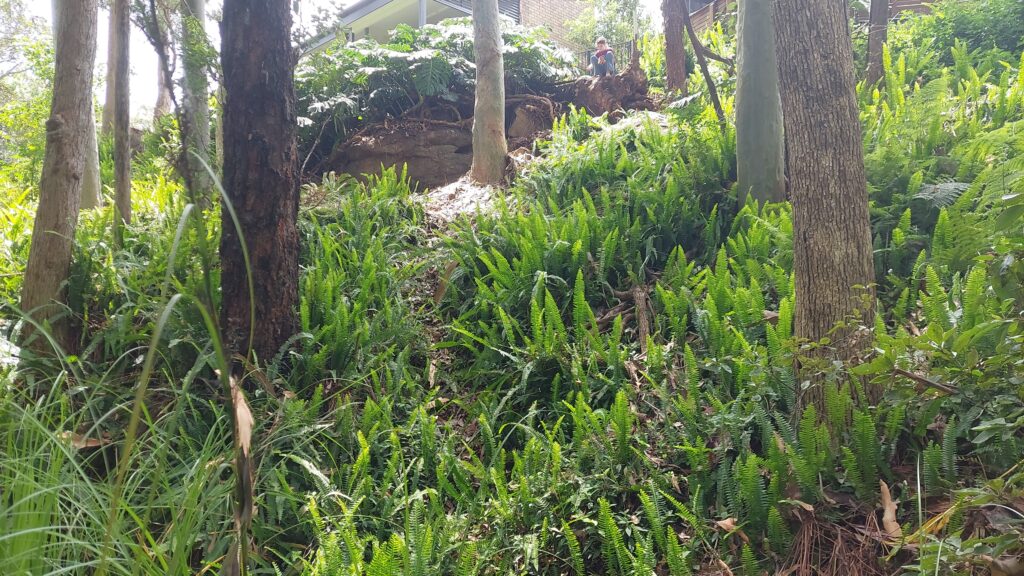
So, to avoid this issue, I cleared the fishbone fern from between trees before the Gahnia. Now people will be able to walk onto the rocks at that level and will be able to cross the creek easily.
Doing this lead me to discover a new instance of a native grass (name?) I have seen near Second fall. I cleared around that, around the swamp lilly I found last week and around the native olive tree at the same location.
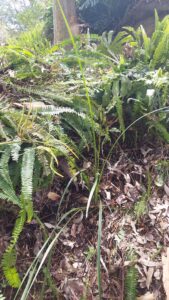 |
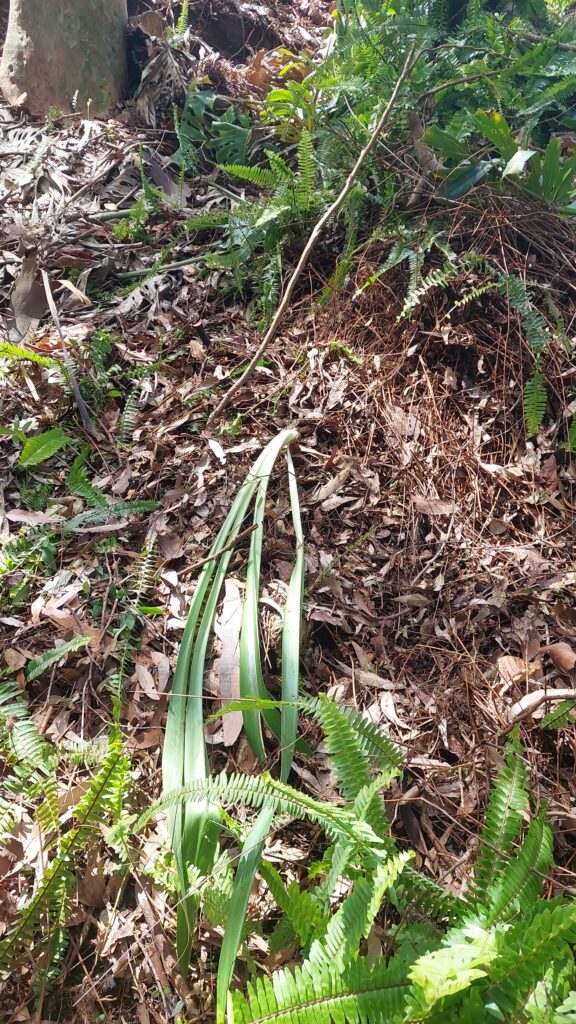 |
I was then able to use my newly created track to find my way down to Second fall and up the track towards Site A where I found more natives that needed freeing from fishbone fern. This is the track at present:
I was out of gas at this point but there is quite a bit to do at this location.This image shows (not clearly) many small sandpaper figs and a Clerodendrum that are struggling against the fishbone fern. This will be a priority for upcoming working bees.
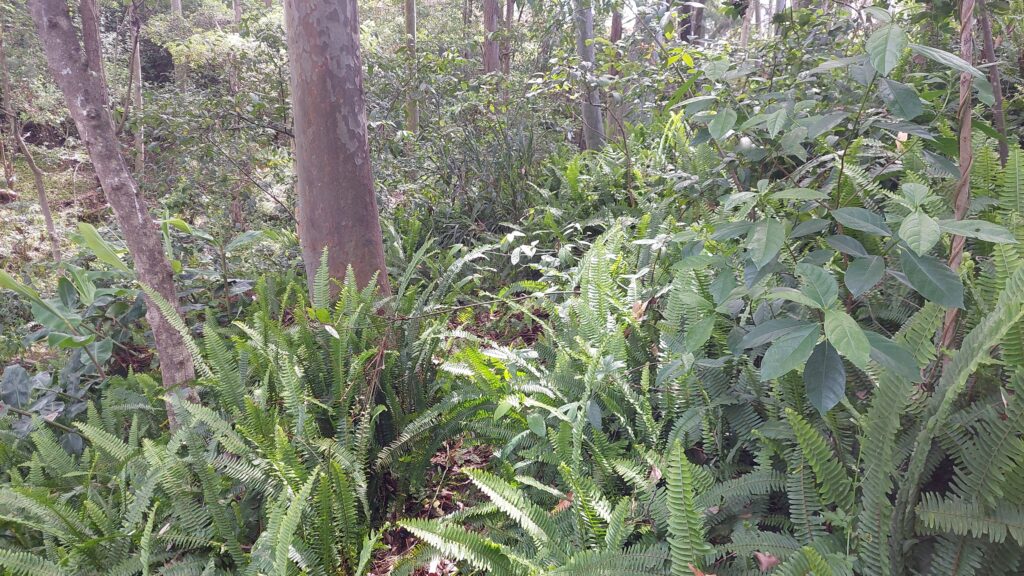
Site A is also in a bad way. Not much can grow here until the fishbone fern makes way…

So much to do!
